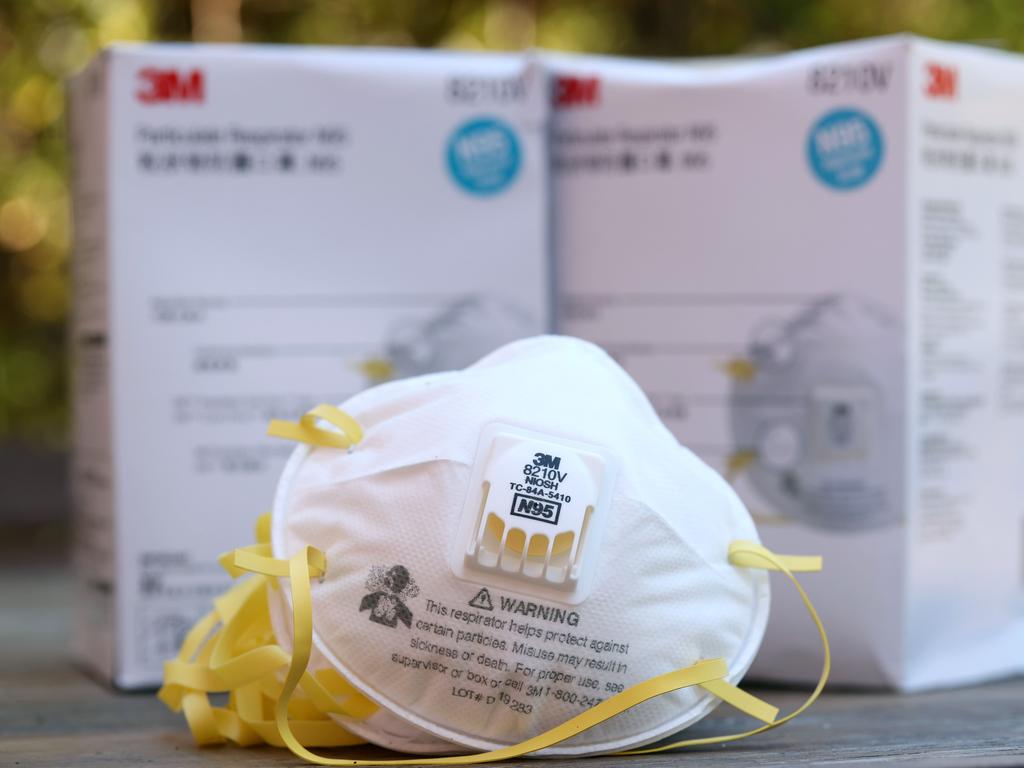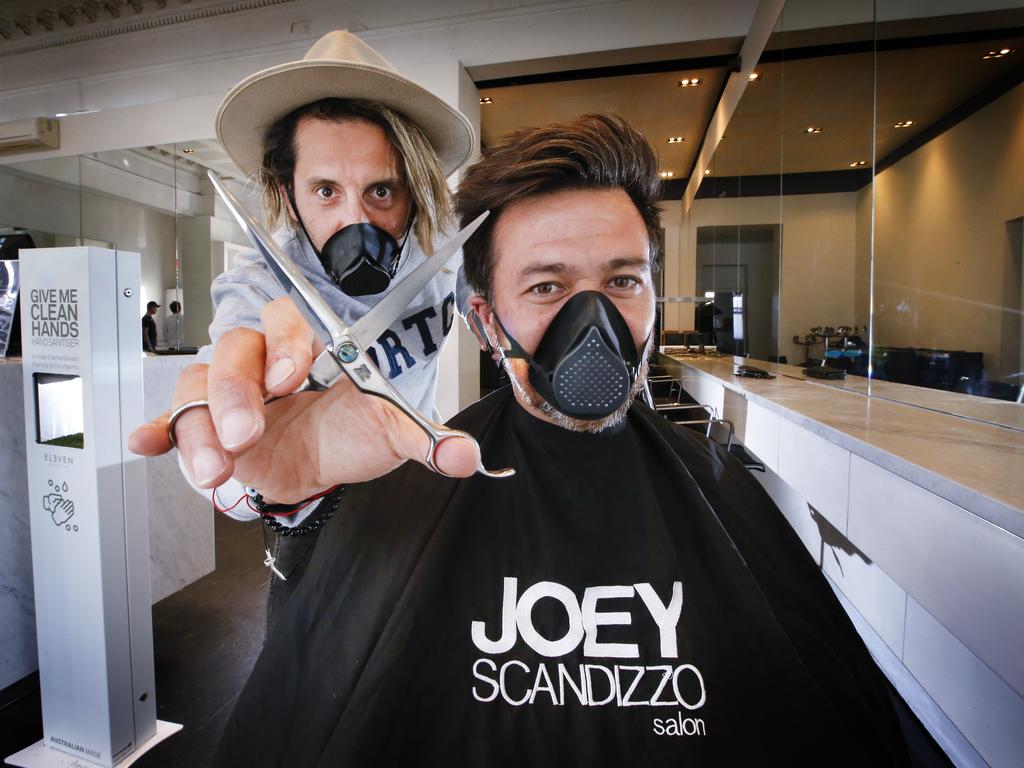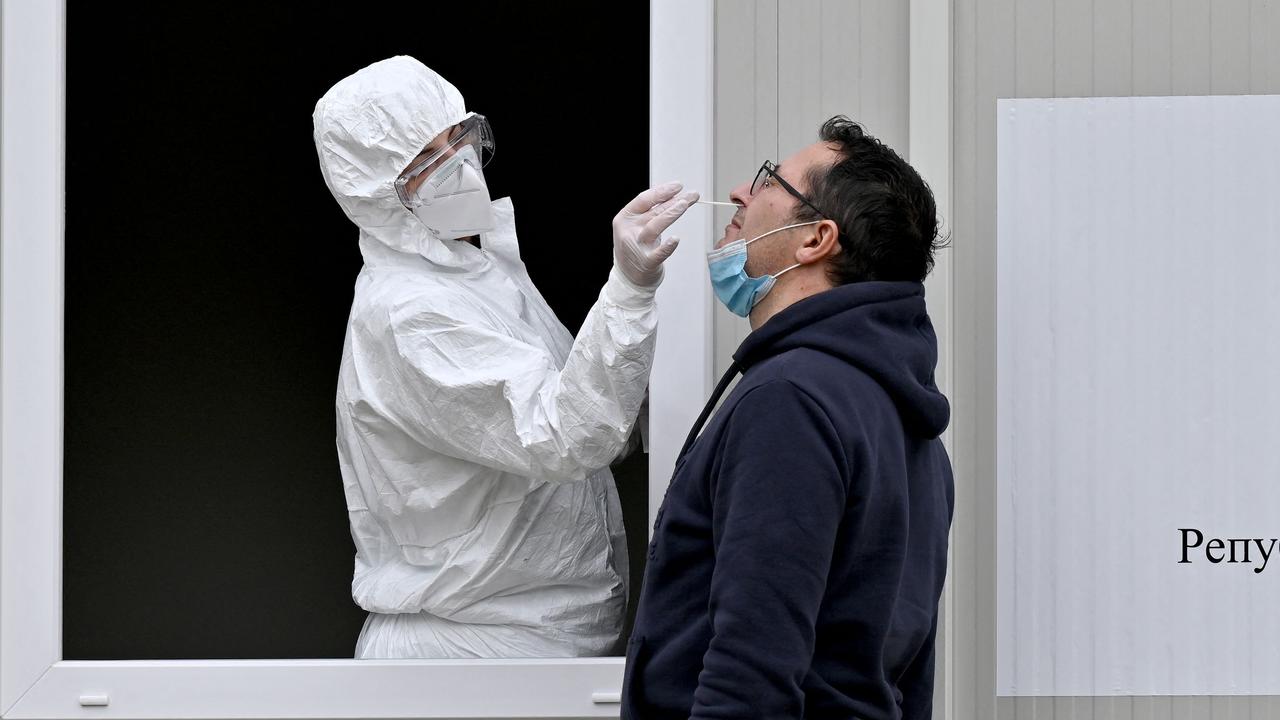Omicron face mask warning: What you need to wear now
As Omicron cases surge amid record Covid-19 infections, our choice of face masks is more important than ever. Here’s how to protect yourself.
As Omicron cases surge amid record Covid-19 infections, our choice of face masks is more important than ever.
Two of Australia’s leading experts — virologist Professor Sarah Palmer, co-director at the Centre for Virus Research at The Westmead Institute for Medical Research, and Professor Catherine Bennett, Chair in Epidemiology at Deakin University — give their views on what type of face masks Australians need to be wearing to halt the Omicron spread.

WHAT FACE MASK IS THE BEST OPTION TO WEAR WITH THE OMICRON VARIANT SPREADING IN AUSTRALIA?
Professor Palmer: Due to the highly contagious nature of the Omicron variant, the most effective masks to wear are KN95/N95 masks or medical grade surgical masks. These masks can filter both large droplets and the smaller aerosols which could potentially carry the virus if infected people are present. However, to be protective, these masks must be worn correctly covering the nose, mouth and chin.
Professor Bennett: You have to weigh up a few things when choosing face masks – your risk of exposure, how long you will be wearing the mask (eg six hours flying to another state or 30 minutes in a supermarket), and what you are able to afford.
A good single-use mask that is reused or not fitted properly may not be as protective as a well-fitting triple layer cloth mask that is changed and washed after every use. High filtration or respirator masks work best, including the N95 or PF2 mask that offers 95 per cent filtration or better against fine droplets that can carry the virus.
But it is important that these are tightly fitted to the face or some of the benefit is lost. These can be bought for as little as $2 each in a multipack, but there are now also reusable high filtration masks. High filtration masks may be worth considering in higher risk settings such as long public transport trips.
WHAT ARE THE NEXT BEST OPTIONS IF ONE CANNOT GET THE TOP OPTION?
Prof Palmer: If the most effective masks cannot be obtained, the World Health Organisation recommends wearing cloth masks which have three layers. The outer layer should be water resistant (polyester fabric), the inner layer which sits against your mouth should be water absorbent (cotton fabric) and the middle layer should act as a filter (polypropylene fabric).
Prof Bennett: Disposable surgical masks are a cheaper and more readily available option and are also good if they fit your face well – the better the fit, the more effective they are at reducing the spread of the virus by as much as 80 per cent.
Play with the mask to see if you can get a tighter fit if they are loose on you – the CDC recommend you tie a knot in the ear loops where they attach to the mask and then tuck in the extra material to achieve a tighter fit. This is probably enough for most people in most public casual exposure settings like supermarkets in locations where there is not much local transmission being reported. It is important that surgical masks are not reused, and are changed if they get wet.
WHY ARE THESE BETTER THAN A CLOTH MASK OR A SCARF?
Prof Palmer: The KN95/N95 masks or medical grade surgical masks are better at preventing both large droplets and smaller aerosols from entering your nose and mouth. These masks also prevent the wearer from spreading respiratory droplets. Single-layer cloth or scarf masks provide very little protection. In fact, these masks can have a high level of leakage.
Prof Bennett: Filtration and surgical masks filter out smaller droplets and particles than either cloth masks or scarves. Clothes masks are variable, but to offer good protection need to be three layers thick, and the ones that allow you to adjust the straps so they are a tighter fit around your face are the best. Scarves offer particularly poor protection as they are often made of more coarse fibre and poorly fit the face.

HOW OFTEN SHOULD YOU CHANGE YOUR MASK?
Prof Palmer: Medical grade surgical masks should be worn once then discarded. Cloth masks can be placed in a clean plastic bag and washed if they become dirty. Be sure to always clean your hands with sanitiser after taking off a mask.
Prof Bennett: The manufacturers tell us that disposable masks should not be warn for more than three to four hours at a time, and replaced after each use. Clean masks should be stored safely till you need them, preferably in a small resealable plastic bag, and used masks need to be placed in a bin.
Reusable masks should be washed after each use with soap and water. Masks should be handled carefully as they may be contaminated if you are carrying the virus, or have been around someone who was, and you should always wash your hands well with soap and water after handling a used mask. Masks should also be changed if they become wet as they will not work as well, no matter what kind of mask.
IS WEARING A DOUBLE MASK ANY SAFER?
Prof Palmer: Some people prefer wearing a medical grade surgical mask inside a single-layer cloth mask and this does provide added protection when compared to wearing a single-layer cloth mask alone.
Prof Bennett: There is evidence that doubling up on masks can help, especially a surgical mask with a well fitting reusable cloth mask over it that helps give finer filtration, but also holds the surgical mask closer to the face so there is less leakage r exposure around the mask. This will be harder to breath through than a good quality high filtration mask, but will give added protection in higher risk settings if needed for a short period.
Again, it is only helpful if the surgical mask is a fresh and replaced often, and the cloth mask is also replaced and cleaned daily.

WHAT ABOUT THE CLOTH MASKS THAT HAD A SECTION FOR A REPLACEABLE FILTER? ARE THEY STILL WORTH GETTING?
Prof Palmer: If these masks have three layers they can be protective but the best masks to wear are medical grade masks such as the KN95/N95 or medical grade surgical masks. It is all about preventing the spread of respiratory droplets either inhaled or exhaled.
Prof Bennett: This is like wearing a cloth mask with a surgical mask, and may be just as effective is the same rules are followed about changing the filter and washing the cloth mask daily.
More Coverage
Originally published as Omicron face mask warning: What you need to wear now




